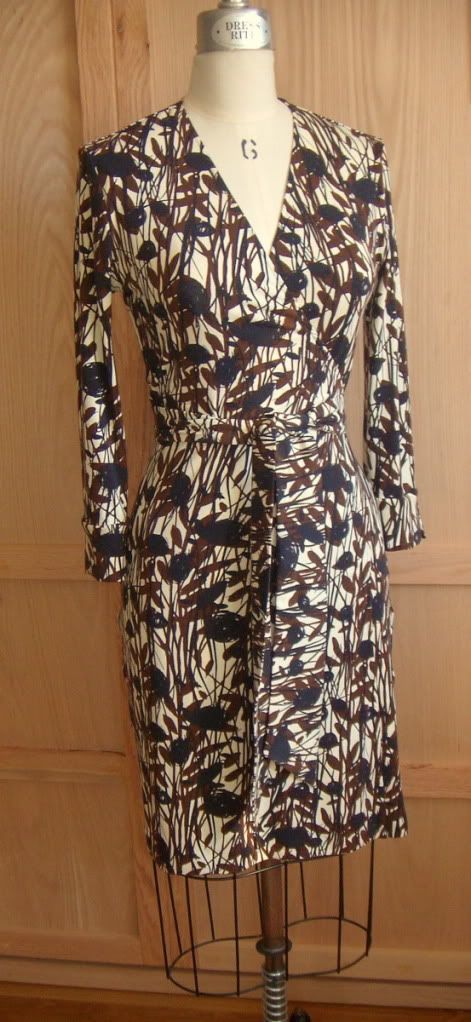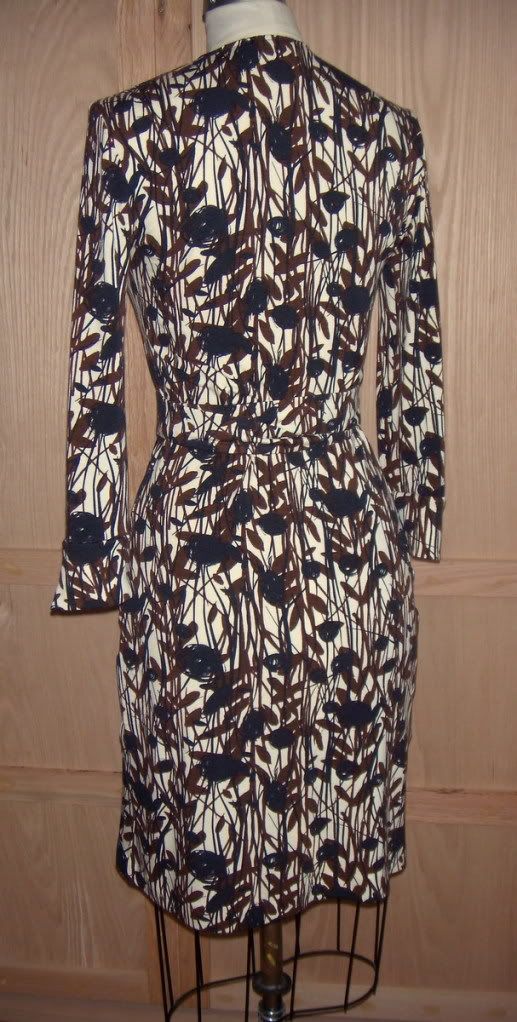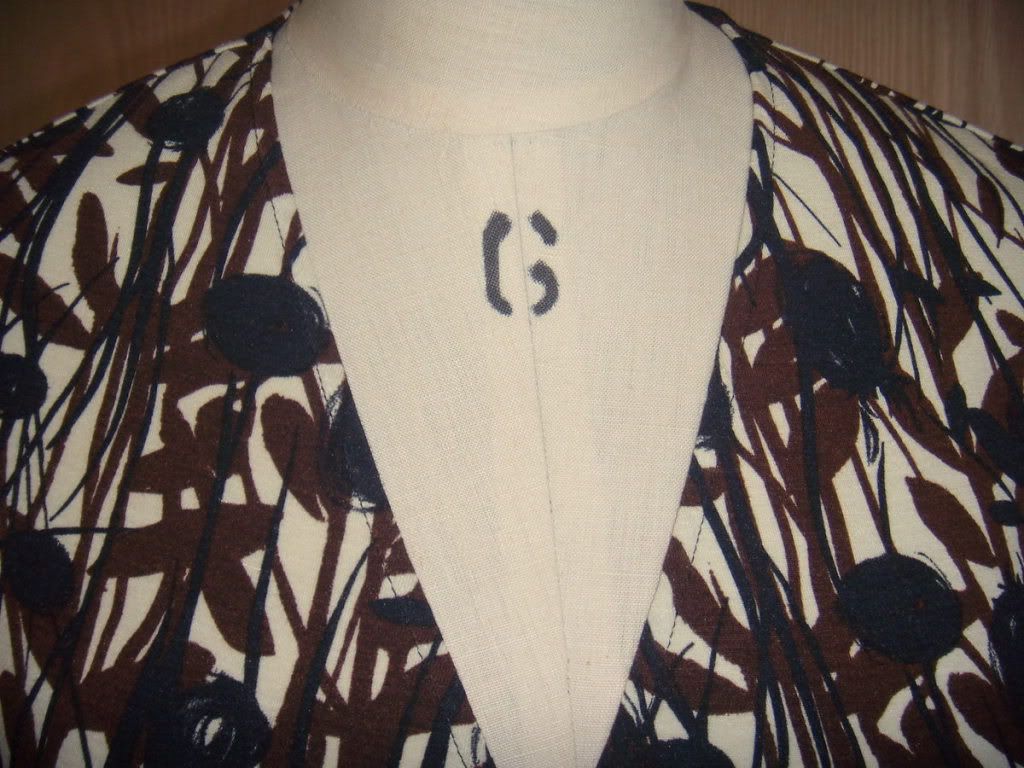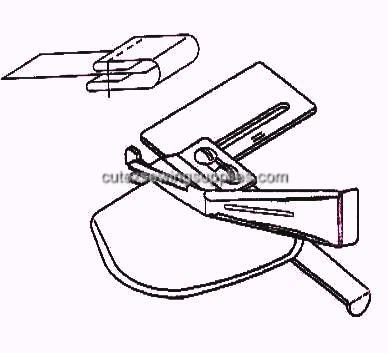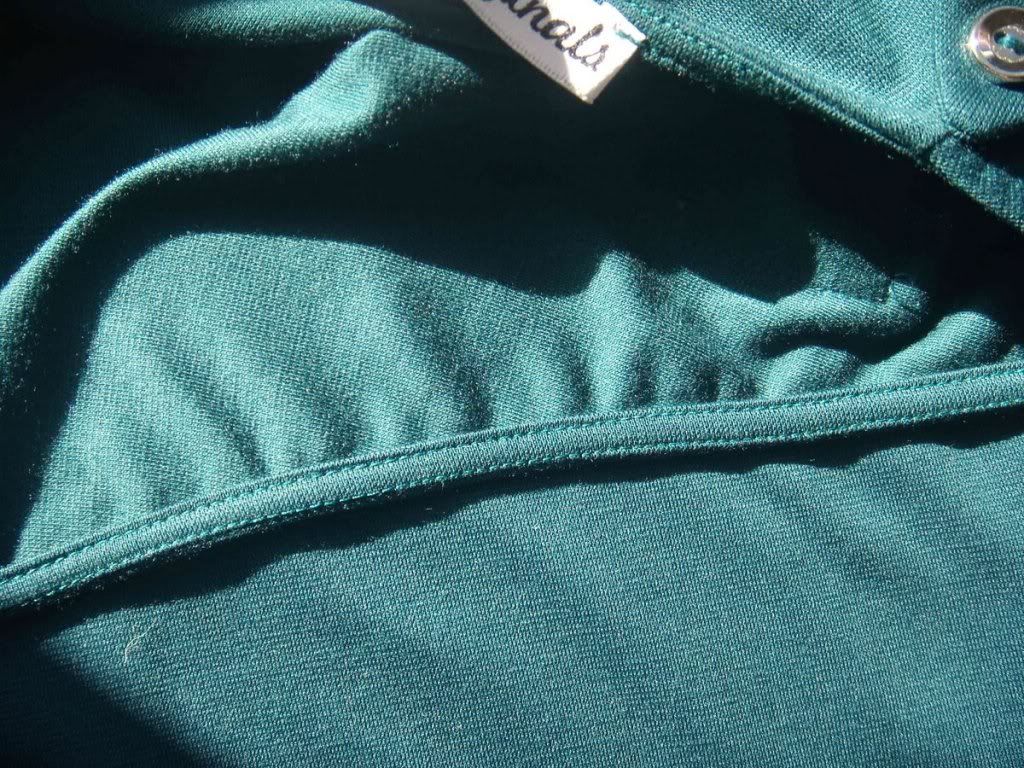My husband and I were lucky enough (or unlucky, you choose) to be invited to 4 weddings this year, and every dress I wore was made by me, although that wasn't my intention. Vegas in November was the last of them, and I was all set to go store bought for this one. The only request was that it be floor-length. I ordered a great
dress online (navy one-shoulder with beading and a slit), it came and fit perfectly except for the length. And the value.
It was polyester jersey with a poly lining, no inner structure at all except for clear elastic applied to the neckline. And $270. No no no no no. I just couldn't do it. I had about 3 weeks to either hem it or come up with plan B. So I ordered fabric swatches from Emma One Sock of this
high-tech stretch matte crepe that was touted as a cross between 4-ply silk crepe and matte jersey. They of course arrived in about 2 days, and I loved the color of the navy. I could tell even from the swatch that it wasn't as drapey as the poly jersey, or even true matte jersey, but decided to work with it anyways. More on that later.
I made a copy of the original dress, using a combination of laying the pieces flat over butcher paper and tracing, and measuring seam lengths and hem/strap width. Since the dress is gathered along one side, it's pretty tricky, but I think I was able to get really close. Paying attention to the grain will tell you how much you need to spread the pattern on the side to get the same amount of gathering. It was the same front and back, if you can believe that. I know, I tried it on both ways and it fit the same.
Yes I returned the dress. Within a week's time, and it was no worse for the wear. If you have a problem with this stop reading, obviously my moral compass is not the same as yours. I don't plan to make a habit of this, or do anything else with the pattern.
The fabric was very substantial on it's own, so even though the original dress had a full poly lining (it seemed really flimsy to me, but actually did the job under the nicer poly jersey), I only used a partial lining to the waist. For the beading, I found this gorgeous
trim at Shine Trim's website. I actually much prefer this to the one color seed beads sewn to the original dress, and I made mine go down all the way to the top of the slit. Having it stop at the hip looked off to me.
My copy, and the original
When the fabric arrived from EOS, I was able to give it a better stretch test, and it had much less than the jersey. Gathers also lay very different with drapey vs firm-bodied fabric. Not necessarily a bad thing, but any time you change out one fabric for another with the same pattern, even just the color, the results can be unpredictable. I think I added 2-3 inches to the pattern around the body to account for the decrease in stretch, and an inch in the bodice for the lack of drape. I was in a time crunch so I did not make a muslin. (GASP! THE HORROR!) (I never do this, especially not with a brand new pattern).
Either my skills have increased or I got really lucky (probably both), because the fit was really good right off the bat. I couldn't even try it on until I had most of it together anyways. I ended up taking it in around the hip level and below, although the pattern of the jersey dress was straight down from the hip, on the body it curves in more due to the fabric drape. Since mine didn't have the same drape (not that it was stiff at all, it just wasn't drapey jersey), I had to create that look by taking in the side seams.
Inside of dress showing neckline and lining

Inside of dress showing lining and armhole

My invisible zip came out great the first try, although I did make sure to interface the opening, and there's not much that isn't easier on an industrial machine with the right foot. ( You haven't lived until you've inserted a zip with a real metal invisible zip foot instead of those flimsy plastic ones they usually sell for this purpose).
Closeup of beading, and seam with invisible zipper

I applied the beading last, handstitching it down over the gathered side seam. I finished the seams on my serger, and also serged a blind-stitched hem. The fabric behaved beautifully on both the industrial straight stitch and the serger.
Hem

I got a lot of compliments on the dress, and spent about $130 total on the materials. The fabric is so much nicer than the original dress, it feels substantial and has a lot less sheen. The gathers don't lay as flat as the jersey though, and if the fabric were any stiffer I don't think they would have worked at all. But I'm happy I was able to anticipate the differences and make allowances for them.
Original dress













































